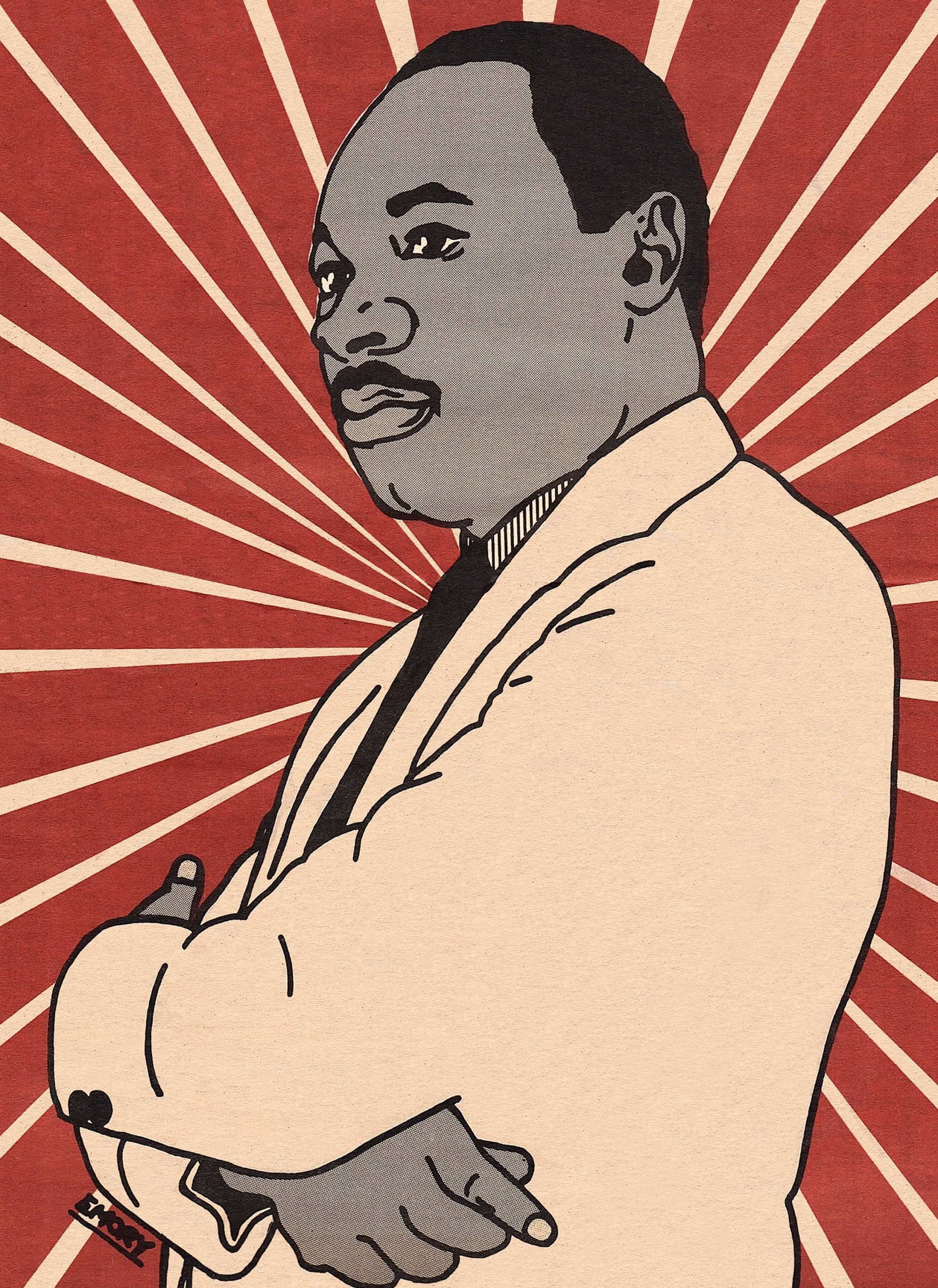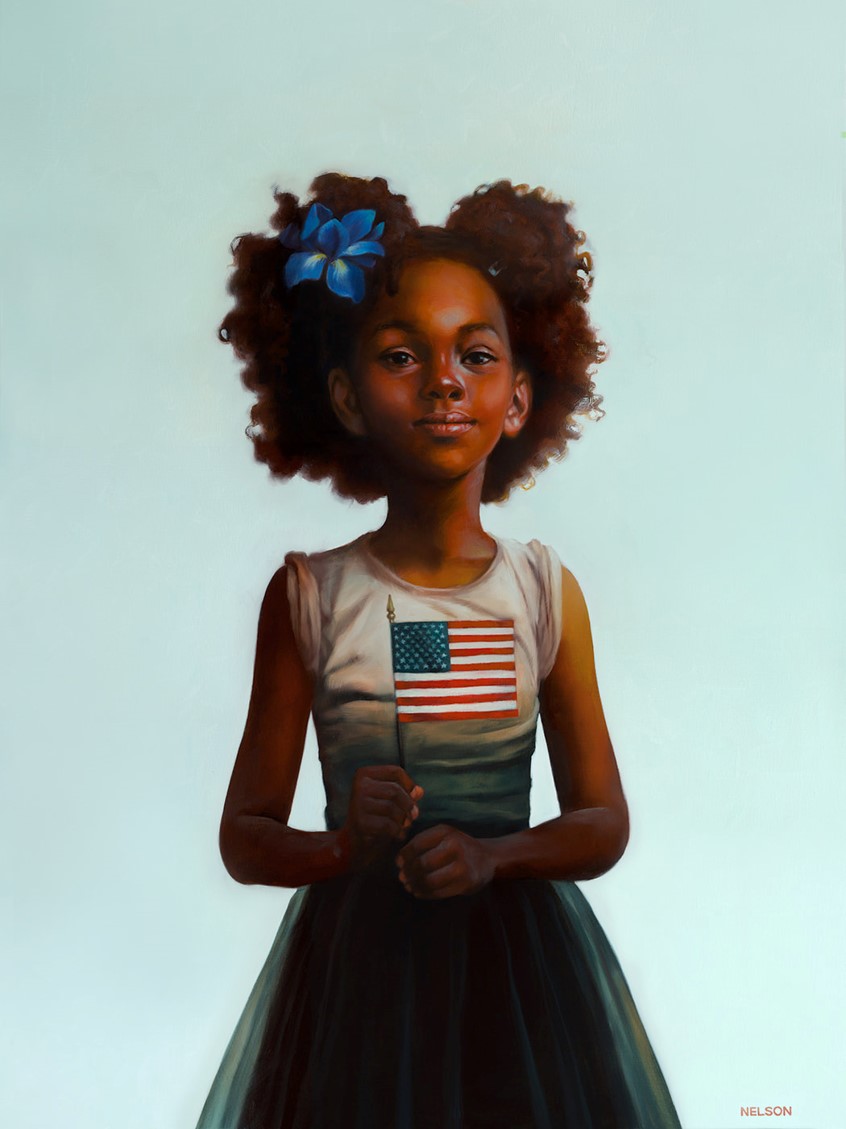REVIEW: Imprinted: Illustrating Race – Boston Globe
June 21, 2022
Eyes of the artists examine race then — and now
‘We help people who are broken. And try to understand the world through making art’

Read Full Article: BostonGlobe.com
STOCKBRIDGE — Camera-toting tourists dressed in plaid shorts and short-sleeve jerseys hold the hands of young children in sandals, and silently — almost solemnly — pause before the searing emblem of an era.
Hanging on the walls here at the Norman Rockwell Museum is the artist’s famous 1964 depiction of a 6-year-old Black school girl being escorted to class by four faceless federal marshals.
Her name is Ruby Bridges.
It’s her first day at an all-white public school in New Orleans. And on the wall behind her is a racial slur and a splattered tomato that lies on the sidewalk after exploding just beneath that ugly word.
It’s raw. It’s real.
It lives here, part of a new exhibit here at the Rockwell Museum called: “Imprinted: Illustrating Race,’’ which includes more than 150 works of art and artifacts by an array of artists that explore the harmful stereotypical images that have resulted in a noxious perception about race.
It includes Rockwell pieces like the one with that little girl. It’s called “The Problem We All Live With,’’ the 1964 oil on canvas work commissioned by Look magazine that is on view in the main gallery, part of a fresh examination of the role of published images in shaping attitudes about race and culture.
The exhibition, on view until the end of October, is an arresting display that traces the long and painful struggle for civil rights and equality in America.
It’s an unflinching examination of a time when harmful racial stereotypes contributed to a noxious public perception about race — a societal problem whose echoes can be heard still.
“You get an amazing sense of the evolution of the Black image in American culture,’’ Cherene Sherrard-Johnson, a professor, scholar, and essayist and the exhibition’s national adviser, told me here the other day.
“Rockwell was this iconic illustrator and those images are very familiar to people in terms of how we imagine life and culture,’’ she said.
“So, part of this exhibit is the image of African Americans made by Black artists and white artists and artists of many different backgrounds, creating a similar visual grammar of what black life is like here.’’
The exhibition is an ambitious effort that presents illustrations by Hammatt Billings, George Cruikshank, and others.

It includes historic advertising art that used racially stereotyped images for Cream of Wheat, Aunt Jemima, and Uncle Ben’s and the work of illustrators who have created respectful images that convey a sense of hope. A sense of cultural pride.
“For me, there are no borders,’’ Rudy Gutierrez, an illustrator and professor of illustration at Pratt Institute in Brooklyn, where he has taught since 1990, told me. “There are no labels. Art lands in different places.
“So, whether it lands on the gallery walls, a mural, an album cover, or a magazine, the goal is always to uplift and inspire. I don’t do art for art’s sake necessarily. As a person of color, there’s a responsibility that I feel to speak for people who may not have that voice — who are underrepresented.’’
What is being represented here now is unvarnished. It’s unflinching. The history of racial stereotypes is examined. The roots of damaging and provocative images are on display.
There are plenty of examples of the pervasive effects of negative stereotypes. There are inspiring words from people like Langston Hughes, the poet, social activist, novelist, playwright, and columnist who was a leader of the Harlem Renaissance.
“Perhaps the mission of an artist is to interpret beauty to people — the beauty within themselves,’’ Hughes once said.
Robyn Phillips-Pendleton, guest curator for the exhibition, called the exhibit a labor of love that includes six illustrations by Billings from the original Uncle Tom’s Cabin novel by Harriet Beecher Stowe that vividly dramatized the experience of slavery.
“George Cruikshank, a British illustrator, embellished for the British version of Uncle Tom’s Cabin,’’ she said. “He added violence. He added a lot of different things to the story. He took liberties with the visuals that were not in the original abolitionist novel.’’
Chris Hopkins, an award-winning illustrator who has worked on several major motion pictures, has produced a series on the Tuskegee Airmen as part of his work for the Northwest chapter of the Air Force Art program.
“It proved to a lot of these people that these guys are the same as everyone else,’’ Hopkins said. “They bleed the same. They fight the same. They lose the same. They win the same. And that’s what I think was so important to me about doing the Tuskegee Airmen.’’
It’s all now on display here in Stockbridge.
An American mosaic pieced together by many hands over the years.
Hands like those of Stephanie Haboush Plunkett, the museum’s chief curator and deputy director.
Hands like those of Hollis King, an illustrator and a national adviser to the museum who designed the exhibit’s catalog even though his work on a film in California made for a tight calendar and work schedule.
“But this has been a complete joy because I kept saying to myself, ‘I wish when I was in art school, I had a book like this.’ You know I wish I could have seen a representation like this,’’ King said.
“Because why does this matter? When you are pursuing a dream, when you are doing something that’s really difficult, when you see someone like you doing it — it reinforces you. It gives you hope.
“It gives you something to shoot for. And for a long time, we didn’t have that.’’
Then he thanked his mentors who inspired him along the way.
“And so, we make art,’’ King said. “We tell stories. We create joy. We help people who are broken. And try to understand the world through making art.
“Art is our refuge. It’s our beauty. And everybody’s story needs to be told to help lift the American story. And I think that is part of what this exhibition does. It takes the courage of good people to be a force in the world.
“We all can have a better world and a better future for our children.’’
There is a glimpse of all that on display here at the museum named for a man who knew something about the power of the canvas.
The power of the pen, and the pencil, and the paintbrush. And of the American story.
Learn more about Imprinted: Illustrating Race at nrm.org/imprinted



